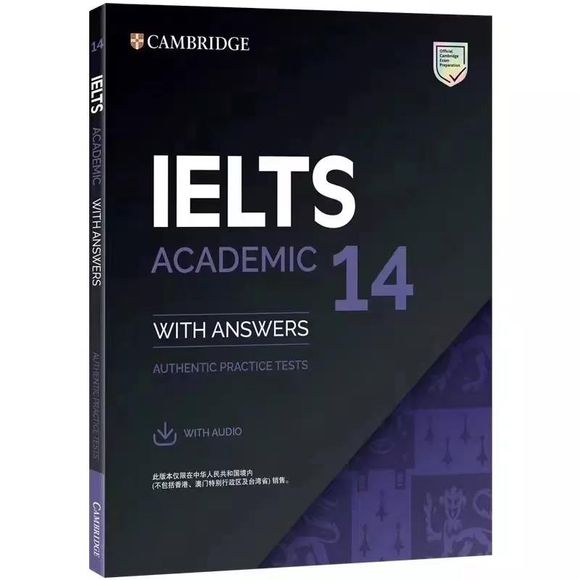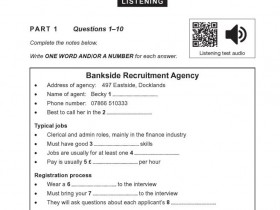- A+
难度:***
背景介绍:
体裁:说明文
题材:社会类
剑桥类似文章:C6T4P3/C11T1P1
主题:关于19世纪和20世纪摩天大楼和大型公共建筑的过度用电问题的回答
段落概括:
第一段:关于建筑能源消耗问题已经存在很久
第二段:Short教授呼吁建筑物自然通风的设计,并阐述过去没有空调时建筑物也通风。
第三段:Short教授指出,现有的建筑物是密闭状态,配备了空调,但是产生了大量的二氧化碳。
第四段:Short教授对一座医院进行研究,发现通风能够保持病人不传染疾病的影响。
第五段:19世纪没有空调的医院和20世纪的密闭建筑设计理念相同,用医院中的公共病房和个人病房举例说明可以设计出自然通风的建筑物。
第六段:由于传染病的传播问题,19世纪很多人不愿意去医院。
第七段:Short教授在近30年内已经研究了低能源和低碳的建筑,可以参考没有空调时代的建筑设计。
第八段:关于Short教授设计的自然通风建筑物的成功例子说明,以及玻璃摩天大楼对气候的优势。
第九段:介绍Short团队成功的设计了能够应对多种天气的摩天大楼。
词汇:
文章及题干重点词汇
recovery n. 恢复;复原
architecture n. 建筑;建筑物;建筑学
research n. 调查;研究
crisis n. 危机;紧要关头
global a. 全球的;球形的
temperature n. 温度;气温;提问
rise n. 上升;增加
energy n. 能源;经历
mechanically adv. 机械地
capacity n. 能力;容量
call for 号召;呼吁
reliance n. 依赖;依靠
solely adv. 单独地;唯一地
air conditioning units 空调组
entirely adv. 完全地;彻底地
widespread a. 普遍的;广发的
ventilation n. 通风设备;空空气流通
inventor n.发明者
market n. 市场 v. 推销;出售
point out 指出
contemporary 同时代的;当代的
habitable A. 可居住的;适宜居住的
seal 密闭的;密封的
carbon emissions 二氧化碳排放
generate v. 产生;发生
account for 占...的比例
electricity n. 电流;电力
substantial a. 大量的
rate n. 比率;率
symbol n. 象征;符号;标志
status n. 地位;重要身份
requirement. n. 要求;需要
highlight v. 强调(=emphasize)
sophisticated a. 复杂的
model n. 模型;模特 v. 模拟;塑造
discover v. 发现
ward. n.病房
similar a. 相似的; prep. 像...一样
performance n.表现;表演;绩效;成绩
principle n.原则
appropriate a. 恰当的;合适的
contend n. 主张;声称 v. 竞争;斗争
communal a. 公共的
completely Adv. 完全地;彻底地
disappearance. n. 消失
expertly adv. 熟练地;巧妙地
fresh a. 新鲜的;清新的
present n. 现在;礼物 v. 出席
threat. n. 威胁
toxic a. 有毒的
principal a. 主要的 n. 校长
disease n. 疾病
epidemic n. 传染病
outbreak n. (疾病等)爆发
fever. n.发烧;狂热
frequent a. 频繁的;惯常的
prosperous a. 繁荣的
decade n.十年
a series of 一些列
reinvent v. 重塑;再造
measure n.方法;措施 v. 测量
approach n. 方式;方法 v.接近
contain v. 包含;包括
staff n.全体员工
seat v.就坐
liability n. 责任;倾向
climate n. 气候;环境气氛
prediction. n. 预测;预报
expect v. 期待;预测
convince v. 说服;;确信
sufficiently adv. 充分地;足够地
harsh a. 艰苦的
assist v. 帮助;协助
switch off (用开关)关掉;切断(电源)
outlook n.展望;观点
同意替换词汇
avoid = fear, threat, driven
prestige = symbol of status
comparison = similar to
circulation = airstream, how = digitally modeled
widespread = large increase, advertising = marketed
ventilated = ventilation
air= airstream,
not= kept patients safe
as often as= similar
reduce= fraction
protection= protect, bad= toxic
破折号解释说明= known as
hundreds of years= 1850s,
题目分析:
Question 14-18
题型:段落信息匹配题 ***
解析:
段落信息匹配题考查学生对题干中核心信息的理解能力和原文的文章结构和快速阅读能力。
段落信息匹配题是全文出题,而且题目是乱序的,经常出现在文章的第一题,但是由于本题的特点,一般都选择先做其他题,最后做段落信息匹配题。
在做其他题过程中,会对文章有一定的理解,能够帮助做题。
在做段落信息匹配题时,需要注意题目要求中是否有NB,即答案重复。而且,做本题时,可以先看题目中是否有和其他题重复的部分,有选择的做题。题目中有比价明显定位词的题目,也可以优先做题。
先做无词摘要题19-26, 再做乱序的段落信息匹配题。
题号 14
题干关键词 why, avoid hospital, 19th century
原文对应 F段的第一小段整体理解
解析
本题比较难理解,因为原文中没有明确的同义词对应。但是题干中的19世纪,在原文中只有D,E和F段有显示而且在做后面的摘要题时,能够理解D和E段的大概意思,不符合题干的要求。
F的第一段整体都在说关于传染性疾病的问题,panicked public和fear这两个单词能够体现出人们对于医院的恐惧和害怕。
答案 F
题号 15
题干关键词 prestige(名誉;声望)
原文对应 C 段最后一句
解析
建筑物和名誉有关系,原文中可能出现同义词替换,或者说明有名望的人
Short regards glass, steel and air-conditioned skyscrapers as symbols of status, rather than practical ways of meeting our requirements. 其中 symbol of status,指的是地位的象征,和题干中prestige是同义替换。
答案 C
题号 16
题干关键词 14. comparison(对比),19th century 和modern,主要找过去和现在2种建筑物的对比
原文对应 E段第一句话
解析
We discovered that 19th century hospital wards could generate up to 24 air changes an hour --- that’s similar to the performance of a modern-day, computer-controlled operating theatre. We believe you could build ward s based on these principles now.
其中提到了19th century中的hospital wards和modern-day的是相似的similar。
答案 E
题号 17
题干定位词 how(方式),circulation(循环),a 19th century building
原文对应 D段第二小段
解析
原文中应该会出现一个具体的19世纪的建筑物,Short检查循环问题。由于原文中只有D,E和F段出现了19世纪,而且14题已经排除了F段,所以答案范围是D和E段。
摘要题中的19和20两个空也能够说明答案在D段。
‘We spent three years digitally modeling Billings’ final designs’ says Short. ‘We put pathogens in the airstreams, modeled for someone with tuberculosis (TB ) coughing in the wards and we found the ventilation systems in the room would have kept other patients safe from harm’. 句子中的第一句话,years digitally modeling Billings’ final designs表示出Short用3年时间,模拟和研究一座建筑物Billings’ final designs,circulation=airstreams
答案 D
题号 18
题干定位词 advertising, large increase
原文对应 B段第二小段
解析
重点是广告和增加有空调建筑物的使用
Instead, he shows it is entirely possible to accommodate natural ventilation and cooling in large buildings by looking into the past, before the widespread introduction of air conditioning systems, which were ‘relentlessly and aggressively marketed’ by their inventors
原文中没有明确指出advertising广告的同义词,但是说到了“marketed”市场这个和广告相关的单词, widespread introduction of air conditioning systems对应题干中的large increase in the use of air conditioning
答案 B
Question 19-26
题型:填空题(无词摘要) ***
解析:
填空题是雅思阅读的必考题,也是最基础和简单的题型,特点是顺序出题和原文原文原词,所以得分率比较高,一般建议先做顺序的填空题。
此题是填空题中的无词摘要,是对原文中几段或者全文进行总结概括。
填空题需要注意题目要求的空的字数,定位问题和同义词替换。
本题中的第一句有2个人名,回到原文定位比较容易,所以先做填空题,再做段落信息匹配题。
题号 19
题干定位词 Alan Short, John Shaw Billings, hospitals good ventilation
原文对应 2个人名定位,Alan Short和John Shaw Buildings到D段,其他定位词到D段的第一句中,ventilated hospital前面的名词design符合
解析
原文没有出现architectural的同义词,但是design是hospital的一部分,符合题干的名词所有格, 同义词:ventilated = ventilation
答案 design
题号 20
题干定位词 air, patients, not, harm
原文对应 在D段第二小段继续寻找题干定位词
解析
D段:第二句话出现了airstream=air, 所以介词in 前面的名词是20题的答案
答案 pathogens
题号 21
题干定位词&答案词性预测 和20题定位相同
名词,且根据空前的短语suffer from能够推测是表示“疾病”的单词,而且后面有“否定”, not
原文对应 原文对应D的第二小段第二句话中modeled for someone with tuberculosis (TB ) coughing in the wards
解析
这句话中出现了someone和coughing,应该是咳嗽的人,后面还出现了patients,说明此句是21题的定位句。
疾病就是tuberculosis (TB )(22题),原文句子后面的kept other patients safe from harm对应题干中的would not have harmed other patients。
答案 tuberculosis
题号 22
题干定位词&答案词性预测 also, air, change, modern operating theatre
名词,表示“地点”的名词
原文对应 按照顺序原则,从E段开始找22题的答案
解析
E段第一句:We discovered that 19th century hospital wards could generate up to 24 air changes an hour --- that’s similar to the performance of a modern-day, computer-controlled operating theatre.
通过定位词modern operating theatre,可以推断出22题的答案在第一句中。
原文中的as often as是原级比较,可以和题干中的similar同意替换,句子中的hospital wards是属于医院的,而且能够产生air changes
答案 wards
题号 23
题干定位词&答案词性预测 energy use, reduce, patient, area
名词,或者形容词,通过area推测出要找什么样的区域
原文对应 按照顺序原则,在E段第二小段开始寻找答案,第一句话中的not可以确定不是答案句。第二句话中的appropriate for certain patients可以和题干中的locate more patients对应
解析 句子末尾的at a friction of energy cost对应的是reduce energy use
答案 communal
Tips:摘要题的题干如果分段,那么原文一定也分段,所以24题在E段后的F段开始找答案。
题号 24
题干定位词&答案词性预测 major, improve, ventilation,19th century, hospital, demand, protection, bad air
名词,通过理解题干,“19世界提高空调的需要是来自”,应该是来自什么人,所以回到原文需要找表示“人”的单词
原文对应 F段的第一句中出现了19世纪,比较明显的定位以及protect against ... toxic air对应题干中的protection against bad air
解析
所以第一句是定位词所在句,demand可以对应原文的driven,主体是人public
答案 public
题号 25
题干定位词 同24题
原文对应 25题和24题在同一句子中,所以答案应该在附近
解析
需要找一个专有名词或者术语,在找24题答案时,有一个破折号,破折号后面解释说明是一种什么空气,所以破折号前面的名词就是25题的答案
答案 miasmas
题号 26
题干定位词&答案预测 hundreds of years, London, Paris, 19th century
空的词性是名词
原文对应 F段第二句话
解析
epidemics附近只有并列,所以可以找原文中的名词而且在伦敦前面,是发生的一件事,outbreaks这个单词表示的是“爆发”,那么cholera就应该是具体爆发的事件,所以答案是cholera。
这句的开头是miasmas,对应题干中26题开头的these, these 指代上文中说到的名词,也就是25题,进一步说明25题。
答案 cholera
长难句分析
1. ‘We put pathogens in the airstreams, modeled for someone with tuberculosis (TB ) coughing in the wards and we found the ventilation systems in the room would have kept other patients safe from harm’.
解析:
本句是由and 连接的一个长难句,句中的put, modeled和found分别是3个小句,其中with tuberculosis (TB )和 coughing in the wards是介词短语和分词短语,共同修饰前面的someone。
We found the ventilation systems in the room would have kept other patients safe from harm’. Found后面省略了连接宾语从句的that,在宾语从句中,动词后的that经常省略,在分析句子时可还原。ventilation systems是从句的主语,后面的 in the room是介词短语作后置定语,修饰ventilation systems。
译文:
我们把病原体放入空气中,模拟某人带有肺结核病毒且在病房中咳嗽。结果发现,室内的指令系统,能够使得病人远离病原体的危害。
2. Much of the ingenuity present in 19th-century hospital and building design was driven by a panicked public clamoring for buildings that could protect against what was thought to be the lethal threat of miasmas - toxic air that spread disease.
解析:
分析长难句,首先要明确动词,其次再划分每一个从句,最后整合理解。
本句的动词是被动语态的was driven,前面都是主语,主语比较长,是名词所有格Much of the ingenuity present in 19th-century hospital and building design。句子中动词真正的发出者是by后面的a panicked public,clamoring for buildings是它的后置定语。
buildings that could protect against what was thought to be the lethal threat of miasmas 是复合从句,包含2个从句,第一个是定语从句,先行词是buildings,,第二个是名词性从句。
破折号后面是对前面的名词进行解释说明,即miasmas.
译文:
大多数现存的19世纪的医院和建筑物,出自于恐慌的公众要求。公众叫嚷着要求设计出的建筑物能够抵抗所谓的致命的瘴气,也就是能够传播疾病的有毒的空气。
3. Miasmas were feared as the principal agents of disease and epidemics for centuries, and were used to explain the spread of infection from the Middle Ages right through to the cholera outbreaks in London and Paris during the 1850s.
解析:
and 连接的2个句子,整个句子都是被动与他,动词分别是were feared和used,其中disease和epidemics是并列,能够推测出epidemics是疾病。
from the Middle Ages right through to the cholera outbreaks in London’s and Paris during the 1850s 这部分是介词短语作名词infection的后置定语,修饰作用。
译文:
很多世纪以来,瘴气被恐惧的认为是疾病和传染病的主要载体,而且用来解释感染的传播,从中世纪到19世纪50年代伦敦和巴黎爆发的霍乱。
本文受著作权保护,特此声明:禁止任何媒体、网站或个人在未经书面授权的情况下违法转载或使用。
- 添加Jenny老师
- 预约KET/PET试听
-

- 添加小苗老师
- 预约雅思、法语试听
-








您可以选择一种方式赞助本站
赏